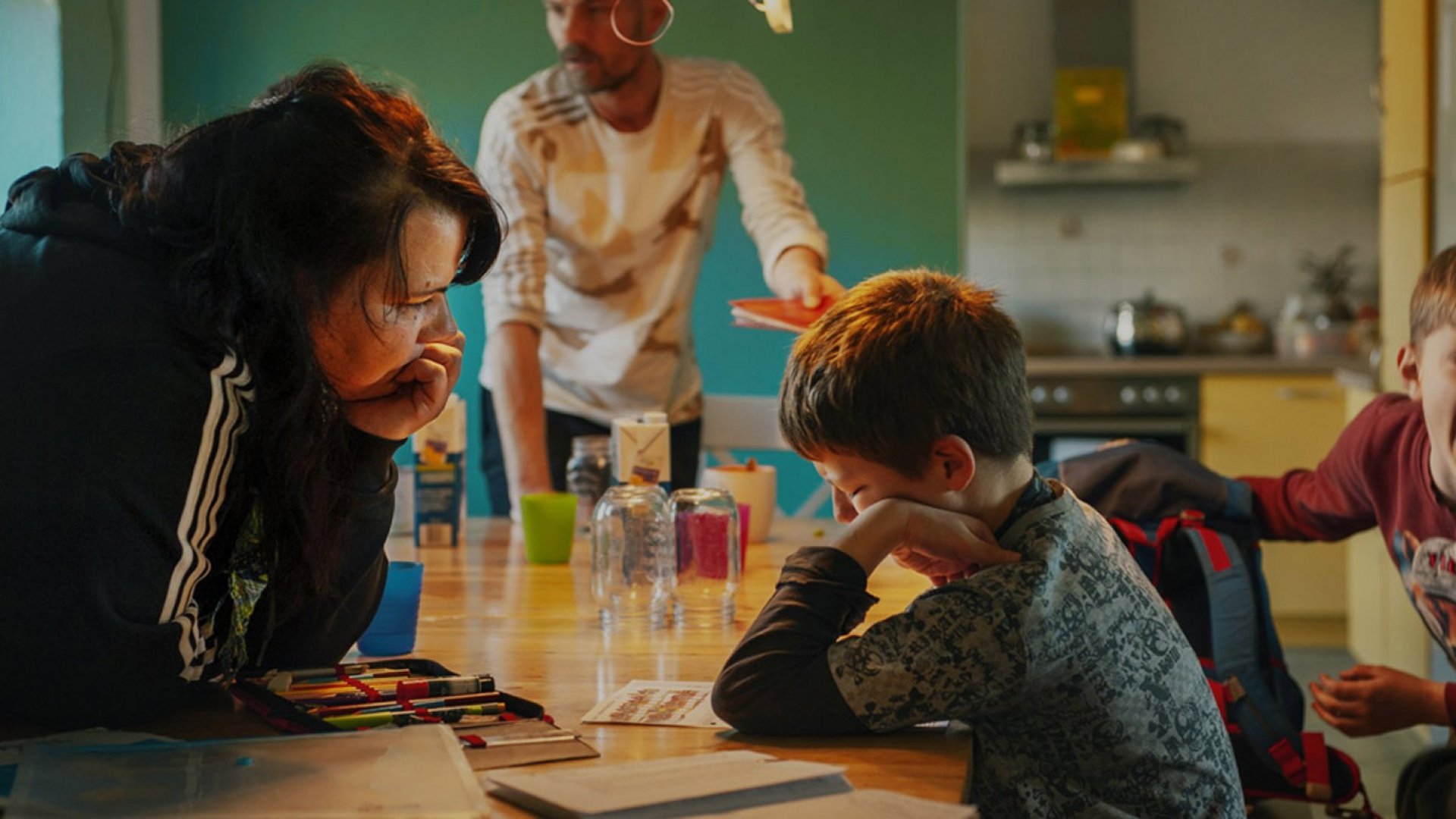

The Family Approach offers an intimate look into the world of youth welfare services. One year after pitching at the Good Media Pitch during Doxumentale, the filmmakers share how the experience shaped their impact and outreach.
In October 2024 impact producer Lisa Nawrocki (Bandenfilm), producer Britta Strampe (Bandenfilm) and director Daniel Abma pitched their project The Family Approach at the Good Media Pitch during our first Doxumentale. The documentary follows an intensive pedagogical residential group over the course of a year and offers a unique insight into the daily business of youth and child services and shines a spotlight on those in the background who work day after day to give the children what they need the most: safety, and someone who’s on their side. Alongside the film, Nawrocki, Strampe and Abma presented their impact campaign, aiming to raise awareness for child rights, strengthen appreciation for caregiving, and bring the importance of youth welfare services into public and political focus. Now one and a half year later, we asked them about the impact The Good Media Lab and Pitch had on them.
How did the Lab concretely change your release or distribution strategy?
The Lab helped us sharpen our campaign and tailor the goals to different partners. We were able to better articulate how the film can function as a tool to support specific objectives – for example, focusing more strongly on children’s rights. Supported by the Lab, we emphasized the idea of “every child has the right to a home” as a guiding principle in our outreach and impact strategy.
Did the Lab shift or expand your understanding of distribution?
A key insight was that the audiences we aim to reach with the impact campaign are not simply an extension of traditional distribution channels. They require a separate, customized campaign aligned with their specific needs and goals. Such a campaign demands a lot of networking and personal commitment. Through the Lab, we gained a more realistic sense of what we had taken on and fully embraced the Braintrust method – a practice we highly recommend.
What new perspectives on your audience did you gain?
We understood that people from in the media underrepresented groups – such as youth care workers – are eager to see films about their own profession. Our film resonates not only with the traditional documentary audience but also with professionals who see it as a tool to raise awareness about their work and challenges. This duality between cinephile and professional audiences requires careful balancing in promotion and campaign work.
Were there moments when you realized: I’ve never thought about my film this way before?
Yes, particularly when the film found strong resonance with children and young people. It was awarded by the Children’s Jury at the German Children’s Media Festival Goldener Spatz and is now being screened in schools. Children with their own experiences in youth welfare services told us the film made them feel seen and supported.
Did the Pitch open doors – to partners, funders, or new networks?
The Pitch helped us expand our network among impact producers and deepened our understanding of this important field of work.
What would you recommend to other filmmakers facing similar decisions?
Start conversations with potential partners for the impact campaign as early as possible – ideally already during development and financing. A Braintrust with diverse stakeholders can provide valuable perspectives on the project. It’s also crucial to secure a budget for impact work, parallel to the film’s production, and to align with distributors on resources for the campaign. That way, everyone can work toward a shared vision while also being realistic about the limits of such an additional effort.
If you had to describe the effect of the Lab on your project in one sentence, what would it be?
Empowerment! The Lab confirmed that our film can generate real impact and provided us with additional methods and ideas that enriched our campaign.
Which impact of your film/project do you find most rewarding?
The film creates access for young people, counters stigmatization, and strengthens children with experience in residential care. Professionals use it as a tool to reflect on issues such as proximity and distance, participation, or working with parents. It also introduces students in youth welfare training to the possibilities of their profession, helping to counteract the shortage of skilled workers. Finally, the film reaches political decision-makers, showing them that this is an area where cuts cannot be made – giving the profession a face, creating empathy, and fostering understanding.